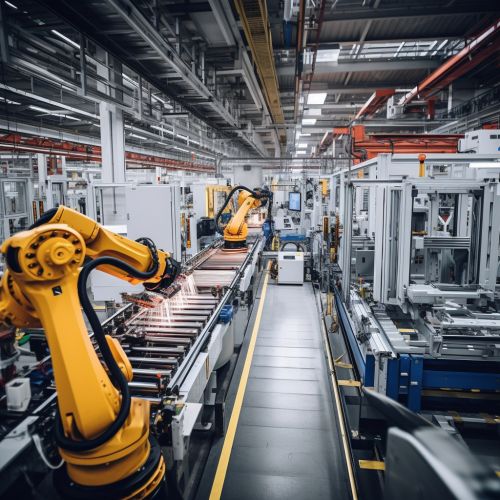Product Lifecycle Management
Overview
Product Lifecycle Management (PLM) is a systematic, standardized approach to managing the lifecycle of a product, from its inception through design and manufacture, to service and disposal. It integrates people, data, processes, and business systems, providing a product information backbone for companies and their extended enterprise.
History
The concept of PLM evolved in the late 20th century, with roots in American industry and the advent of computer-aided design (CAD) and computer-aided manufacturing (CAM). The term 'Product Lifecycle Management' was coined by American engineer Michael Grieves in 1995.
Importance of PLM
PLM plays a crucial role in managing the entire lifecycle of a product, ensuring that all stakeholders have access to the right information at the right time. It helps companies to reduce time-to-market, improve product quality, reduce prototyping costs, identify potential sales opportunities and revenue contributions, and maintain and sustain operational serviceability.
Key Elements of PLM
PLM encompasses several key elements, including:
- Product Data Management (PDM): This involves managing and tracking the creation, change and archival of all information related to a product. The focus of PDM is to keep track of all documentation related to a product, facilitate product data querying and ensure product data integrity.
- Product Design: This is a strategic process of creating new products to be sold by a business to its customers. A very broad concept, it is essentially the efficient and effective generation and development of ideas through a process that leads to new products.
- Product Portfolio Management (PPM): This is a strategic decision-making process where a business list of potential products is aligned and prioritized to deliver on overarching business objectives.
- Manufacturing Process Management (MPM): This involves capturing manufacturing process, resource data, and cost information to support both manufacturing planning and execution processes.


PLM Software
PLM software helps organizations manage their product's lifecycles by providing a data warehouse of all product information. The software can integrate data, processes, business systems, and, ultimately, people in an extended enterprise. PLM software allows a consistent view of the product, which can enable organizations to control and make decisions on information as it evolves.
PLM and Other Business Processes
PLM interfaces with other systems in the enterprise, such as Enterprise Resource Planning (ERP) and Customer Relationship Management (CRM). ERP is a business process management software that allows an organization to use a system of integrated applications to manage the business and automate many back-office functions related to technology, services and human resources. CRM is a strategy for managing an organization's relationships and interactions with customers and potential customers.
Benefits of PLM
PLM provides several benefits to organizations, including improved product quality, reduced development time, decreased waste, and cost savings. It also provides a framework for product optimization and supports regulatory compliance for industries such as automotive, aerospace, and healthcare.
Challenges in Implementing PLM
Despite its benefits, implementing a PLM system can be complex and time-consuming. Challenges can include data quality issues, lack of standard processes, resistance to change, and integration with existing systems.
Future Trends in PLM
The future of PLM is likely to be influenced by emerging technologies such as Internet of Things (IoT), Artificial Intelligence (AI), and Machine Learning (ML). These technologies can enhance PLM capabilities and enable more efficient and effective product lifecycle management.
See Also
- Enterprise Resource Planning
- Customer Relationship Management
- Computer-Aided Design
- Computer-Aided Manufacturing
